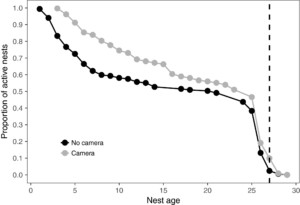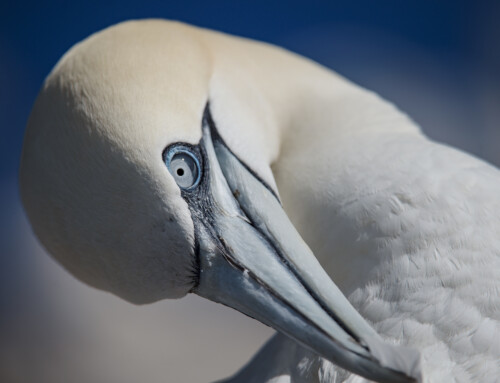LINKED PAPER
Using remote cameras to validate estimates of nest fate in shorebirds. Ellis, K. S., Cavitt, J. F., Larsen, R. T. & Koons, D. N. 2018. IBIS. DOI: 10.1111/ibi.12607. VIEW | OPEN ACCESS
To understand the dynamics of bird populations, ornithologists need a good estimate of nest survival. But monitoring nests can be difficult and time-consuming, especially when you are working with shorebirds that nest in remote areas. Moreover, when you arrive at an empty nest with no signs of the adults or the chicks, how do you know what happened to this nest? Did the young leave the nest successfully? Or were they predated? The study of eggshells (if available) can provide some clues, but often researchers cannot confidently determine the fate of the nest (Mabee 1997). One solution to this conundrum is the use of cameras (Ball & Bayne 2012).
Cameras
A group of American scientists monitored the nests of Snowy Plover (Charadrius nivosus) in two regions of Utah. They pointed infrared-triggered cameras on 358 nests and compared their observations with traditional field methods. When activated by a rapid change in temperature, for example when a bird arrived to the nest, the cameras would take two images per second. The analyses of this camera footage revealed that the researchers correctly identified the fate of 84% of the nests using traditional observation techniques. This indicates that the current protocols for determining nest fate are effective, but could still be improved.

Figure 1 The rate of nest activity with (black) and without (grey) cameras. There is no significant difference in the rate of nest survival between nests that were monitored with a camera compared to nests without a camera.
Eggshells
The incorrect assessment of nest survival was mainly due to the wrong interpretation of eggshells. Soon after the chicks hatch, the adults remove the eggshells from the nest. Some birds also remove eggshells after their nest has been predated. So, when an ornithologist checks an empty nest without eggshells, how does he or she know whether the chicks hatched successfully or were predated? Here, cameras turned out to be useful because they allowed the researchers to closely follow the events at the nest.
Predation
Cameras can thus be an important tool in monitoring nests. But doesn’t the presence of cameras influence the study (Richardson et al. 2009)? Predators could be attracted to a new stimulus, resulting in higher predation rates. Or perhaps the use of cameras increases the rate of survival because nests are less disturbed by visiting researchers. The nests in Utah were predated by a range of animals, including Common Raven (Corvus corax), Red Fox (Vulpes vulpes), Kit Fox (Vulpes macrotis), Coyote (Canis latrans) and several gull species. However, nests monitored with cameras were no more likely to be visited by these predators compared to nests without cameras. These findings are in line with previous work on songbirds (Pietz & Granfors 2000). All in all, cameras turned out to be an important tool to improve our knowledge on the nesting success of Snowy Plovers, a species of conservation concern. Big Brother is watching them, and this time it’s a good thing.
An award winning paper

Figure 2 Kirsten Ellis with her award for best Early Career Researcher paper of 2018.
References
Ball, J. R. & Bayne, E. M. 2012. Using Video Monitoring to Assess the Accuracy of Nest Fate and Nest Productivity Estimates by Field Observation. The Auk 129: 438-448. VIEW
Mabee, T. J. 1997. Using Eggshell Evidence to Determine Nest Fate of Shorebirds. The Wilson Bulletin 109: 307-313. VIEW
Pietz, P. J. & Granfors, D. A. 2000. Identifying Predators and Fates of Grassland Passerine Nests Using Miniature Video Cameras. The Journal of Wildlife Management 64: 71-87. VIEW
Richardson, T. W., Gardall, T. & Jenkins, T. 2004. Review and Meta-Analysis of Camera Effects on Avian Nest Success. The Journal of Wildlife Management 73: 287-293. VIEW
Image credits
Featured image: Snowy Plover Charadrius nivosus | Penny Jarrett | CC BY-ND 2.0 Flickr



